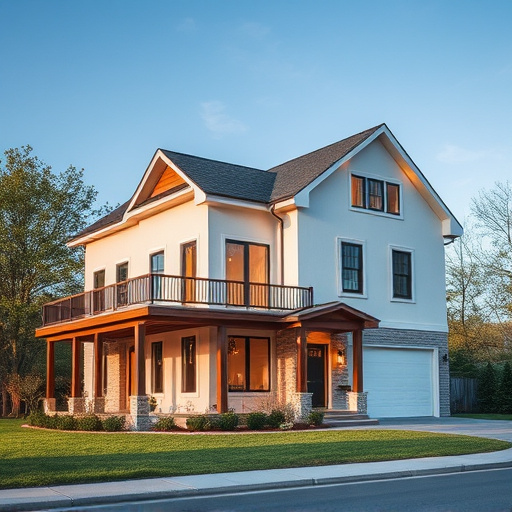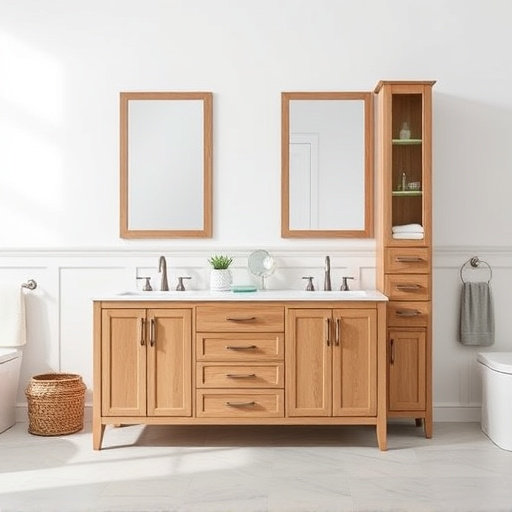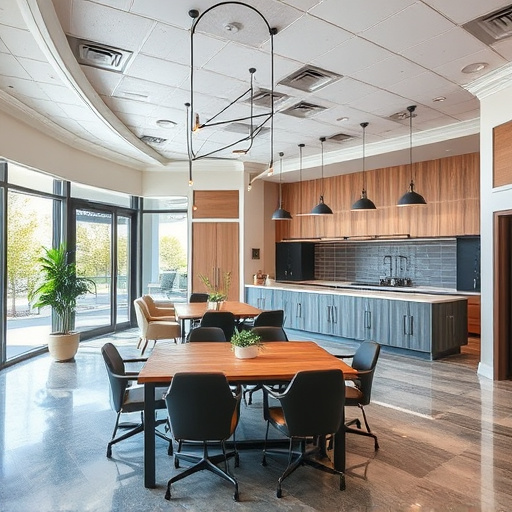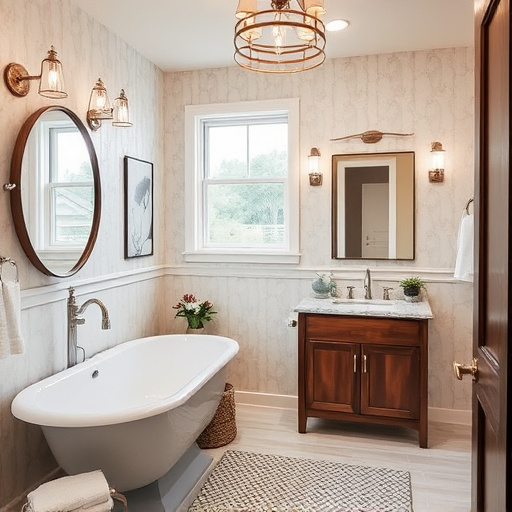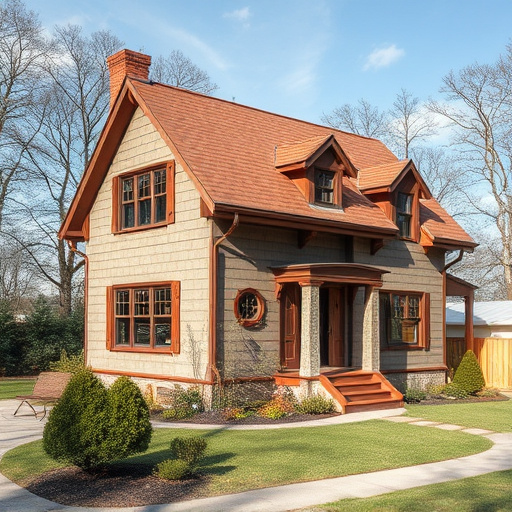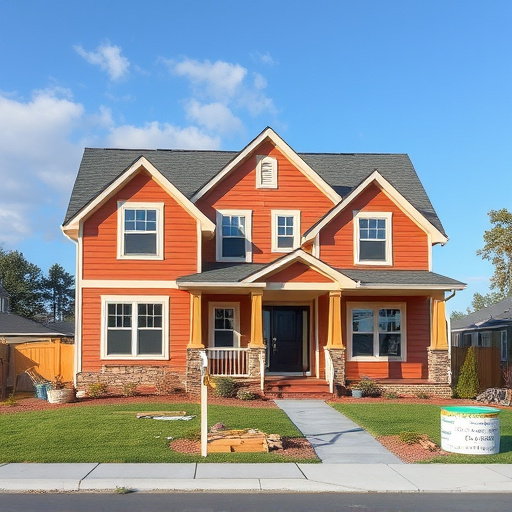Assessing a space's architecture is vital for a successful flooring upgrade. Choose flooring that complements design style and existing features, from modern planks to classic parquet. In renovations, integrate new floors seamlessly with careful planning and precise installation to preserve structural integrity. Prioritize functionality and aesthetics in high-traffic areas like bathrooms and kitchens with durable options like luxury vinyl or ceramic tiles.
Considering a flooring upgrade but worried about disrupting your existing architecture? This guide explores seamless integration strategies for a successful transformation. From assessing compatibility and understanding design elements to choosing floors that complement your space, we break down the process step-by-step. Learn how to seamlessly install new flooring alongside old while preserving your home’s unique character. Discover expert tips and trends for achieving a harmonious blend of old and new with an upgraded floor.
- Assessing Compatibility: Understanding Existing Architecture
- Choosing Flooring That Compliments Design Elements
- Seamless Installation: Integrating New Flooring With Old
Assessing Compatibility: Understanding Existing Architecture
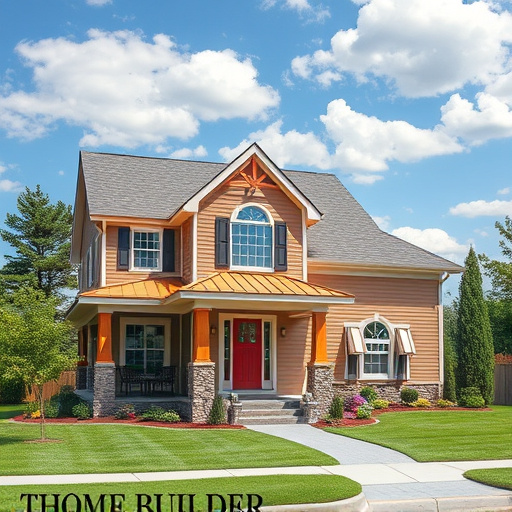
Assessing a space’s architecture is a crucial step when planning a flooring upgrade. It involves understanding the structural elements, design style, and overall aesthetic of your home or building. Each architectural style has its unique characteristics that can influence the choice of flooring materials and designs. For example, a modern minimalist home with clean lines and open spaces may pair well with sleek, contemporary flooring options like wood planks or concrete finishes. In contrast, a traditional home with intricate molding and detailed trim might benefit from more classic and elegant flooring styles such as hardwood parquets or tile patterns that complement its historic charm.
When considering a flooring upgrade, especially in home additions or renovation projects, it’s essential to ensure compatibility. This means evaluating how new flooring will integrate with existing architectural features like stairs, balconies, or unique room configurations. For functional spaces where comfort and durability are key, selecting floorings that match the traffic levels and potential wear patterns is vital. Homeowners should also consider the overall flow and functionality of the space, ensuring that the chosen flooring enhances the room’s purpose and visual appeal without clashing with its established architecture.
Choosing Flooring That Compliments Design Elements

When planning a flooring upgrade, it’s essential to choose a style that complements existing design elements throughout your home. This seamless integration ensures a cohesive look and enhances overall interior aesthetics. Consider the architectural details in each room—from crown molding to wainscoting—and select flooring that either mirrors or contrasts these elements harmoniously. For instance, if your home boasts high ceilings and ornate moldings in formal spaces like the living room or dining area, opt for wide-plank hardwoods that complement the grandeur. In contrast, smaller, more intimate spaces like bedrooms might benefit from the warmth and texture of area rugs or luxe vinyl flooring.
In bathroom remodels and kitchen renovations—common home renovation projects—flooring plays a pivotal role in setting the tone. Water-resistant luxury vinyl planks can add a modern touch while offering practicality for wet areas. For kitchens, consider durable materials that withstand heavy foot traffic and spillage, such as ceramic tiles or high-end linoleum. These choices not only enhance functionality but also contribute to the overall design narrative, ensuring your flooring upgrade becomes a standout feature in any home renovation.
Seamless Installation: Integrating New Flooring With Old
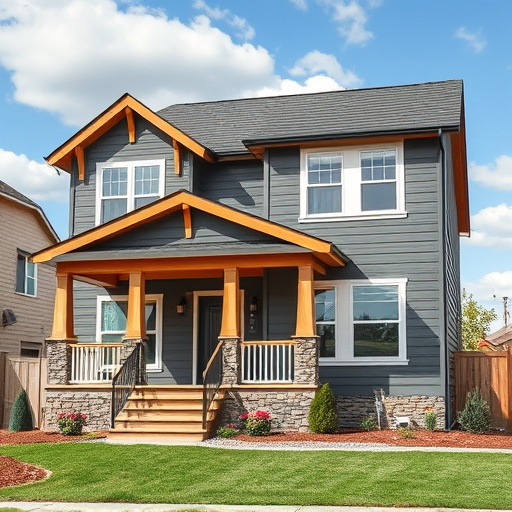
When upgrading your flooring, especially in older homes, seamless installation is key to creating a cohesive look throughout your space. Integrating new flooring with existing architecture involves careful consideration and precise measuring to ensure a smooth transition between different floor levels, styles, and materials. This means avoiding abrupt changes in height or texture that can disrupt the flow of a room.
In many cases, especially during kitchen and bath renovations or bathroom additions, the old flooring may need to be removed entirely before installing the new. Proper planning and skilled installation are crucial here to preserve the structural integrity of your home while achieving a seamless, elegant flooring upgrade that complements both your existing architecture and the specific aesthetics you’re aiming for in these high-traffic areas like the kitchen or bathroom.
When upgrading your flooring, a thoughtful approach that considers existing architecture is essential. By assessing compatibility, choosing floors that complement design elements, and seamlessly integrating new installations with old, you can achieve a cohesive look that enhances your space without overwhelming it. A successful flooring upgrade becomes not just a practical change but an elegant evolution of your home’s or office’s aesthetic.

